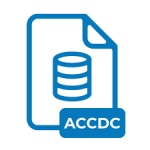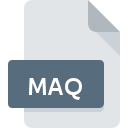.WMDB File Extension

Windows Media Database File
| Developer | Microsoft |
| Popularity | |
| Category | Database Files |
| Format | .WMDB |
| Cross Platform | Update Soon |
What is an WMDB file?
.WMDB files are associated with Windows Media Player, a media library application developed by Microsoft. These files serve as a database that stores information about media files, such as music, videos, and playlists.
More Information.
Windows Media Player has been a part of Windows operating systems since Windows 3.0, but the .WMDB format was notably used from Windows XP onward. The initial purpose was to create a robust and efficient database system that could handle large media libraries, making it easier for users to manage their media content.
Origin Of This File.
The .WMDB file format was introduced by Microsoft as a part of Windows Media Player to efficiently manage and organize media collections. The primary purpose was to enable the player to quickly access metadata, track media locations, and streamline media management.
File Structure Technical Specification.
File Structure
.WMDB files are binary files that use a proprietary format. The file structure includes:
- Header: Contains metadata about the database itself.
- Media Entries: Records for each media file, including metadata such as title, artist, album, genre, and file path.
- Index: An index for quick access to entries, improving search and retrieval performance.
Technical Specification
- Format: Binary
- Extensions: .wmdb
- Associated Program: Windows Media Player
- Operating Systems: Primarily Windows
How to Convert the File?
Windows
- Using Windows Media Player:
- Export Playlist:
- Open Windows Media Player.
- Navigate to the library and select the playlist or media files you want to export.
- Click on the “File” menu and choose “Export Playlist.”
- Save the playlist in a universal format like
.m3uor.wpl.
- Export Playlist:
- Using Third-party Tools:
- MusicBee:
- Install MusicBee from MusicBee’s official website.
- Import your Windows Media Player library into MusicBee.
- Use MusicBee’s export feature to convert the library to a format like
.xmlor.csv.
- MusicBee:
Linux
- Using Wine:
- Run Windows Media Player:
- Install Wine using your package manager (e.g.,
sudo apt-get install wine). - Download and install Windows Media Player through Wine.
- Follow the Windows instructions to export the media library to a universal format.
- Install Wine using your package manager (e.g.,
- Run Windows Media Player:
- Manual Conversion:
- Scripted Export:
- Copy your media files and metadata from Windows.
- Write a script to parse and convert metadata from .WMDB to a format like
.csvor.xml.
- Scripted Export:
macOS
- Using Wine or Crossover:
- Run Windows Media Player:
- Install Wine or Crossover on macOS.
- Download and install Windows Media Player through Wine or Crossover.
- Follow the Windows instructions to export the media library.
- Run Windows Media Player:
- Using iTunes:
- Sync and Export:
- Export the media library from Windows Media Player to a format like
.m3u. - Import the playlist into iTunes on macOS.
- Export the media library from Windows Media Player to a format like
- Sync and Export:
Android
- Using Media Player Apps:
- VLC or Plex:
- Export your media library from Windows Media Player to a universal format.
- Transfer the exported files to your Android device.
- Import the playlist into VLC or Plex.
- VLC or Plex:
- Using File Transfer:
- Manual Transfer:
- Export the library to a format like
.m3u. - Use a file manager on Android to locate and open the exported playlist.
- Export the library to a format like
- Manual Transfer:
iOS
- Using iTunes:
- Sync Media Library:
- Export the media library from Windows Media Player to a format like
.xml. - Import the exported library into iTunes on a computer.
- Sync your iOS device with iTunes.
- Export the media library from Windows Media Player to a format like
- Sync Media Library:
- Using Third-party Apps:
- VLC for iOS:
- Export the media library from Windows Media Player.
- Transfer the exported files to your iOS device.
- Open the files with VLC or another compatible media player app.
- VLC for iOS:
Other Platforms
- Using Cloud Services:
- Google Play Music or YouTube Music:
- Export your media library from Windows Media Player.
- Upload the exported library to Google Play Music or YouTube Music.
- Google Play Music or YouTube Music:
- Using Media Servers:
- Plex:
- Export your media library from Windows Media Player.
- Set up a Plex server and import the exported library.
- Access your media library through the Plex client on any platform.
- Plex:
Advantages And Disadvantages.
Advantages
- Efficiency: Quick access and management of large media libraries.
- Integration: Seamlessly integrates with Windows Media Player.
- Metadata Management: Stores comprehensive metadata, making media organization easier.
Disadvantages
- Proprietary Format: Limited support outside of Windows Media Player.
- Portability: Difficult to transfer and use across different media players and operating systems.
- Corruption: Can become corrupted, leading to loss of media organization.
How to Open WMDB?
Open In Windows
- Using Windows Media Player:
- Simply open Windows Media Player; it automatically reads and updates .WMDB files.
- Third-party Tools:
- Some third-party media library management tools can read .WMDB files.
Open In Linux
- Wine:
- Install Wine to run Windows applications on Linux and then use Windows Media Player.
- Conversion:
- Export the media library from Windows to a more universal format and then import it to a Linux media player.
Open In MAC
- Wine or Crossover:
- Similar to Linux, use Wine or Crossover to run Windows Media Player on macOS.
- Media Library Export:
- Export the media library to a universal format and use it with macOS media players like iTunes.
Open In Android
- Media Player Apps:
- Use media player apps that can import media libraries from exported formats.
- Sync from PC:
- Sync your media library from Windows to Android devices using apps like VLC or Plex.
Open In IOS
- iTunes Integration:
- Export the media library to a format compatible with iTunes and sync it with iOS devices.
- Third-party Apps:
- Use third-party apps that can import media libraries from universal formats.
Open in Others
- Cloud Services:
- Upload your media files to cloud services that support web-based media players like Google Play Music or YouTube Music.
- Media Servers:
- Use media servers like Plex, which can import and manage media libraries from various formats.













